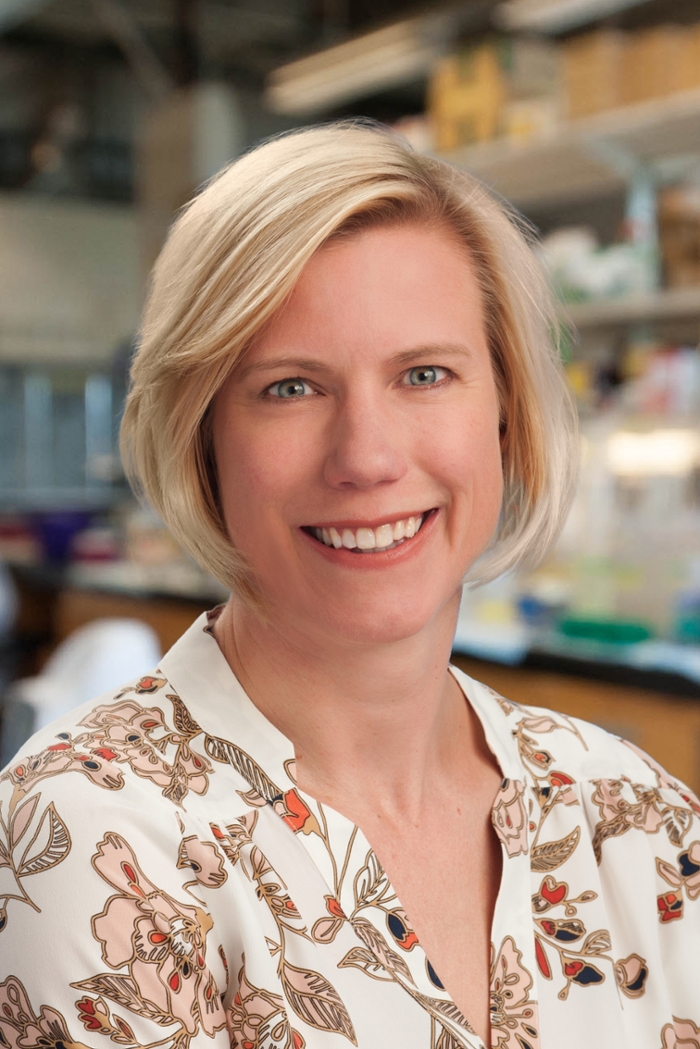Reck-Peterson Named HHMI Investigator
May 23, 2018
By Howard Hughes Medical Institute

Samara Reck-Peterson
What drives your curiosity?
“ Deciphering basic mechanisms in cell biology has led to many advances in medicine and agriculture. My curiosity to understand the mechanisms of intracellular transport is what drives me.” – Samara Reck-Peterson, new UC San Diego HHMI Investigator
Beth Shapiro has dug for prehistoric bones in Siberia. Ralph DeBerardinis has improved the lives of kids with metabolic diseases. Jesse Bloom has uncovered genetic secrets that could help fight the flu. Shapiro, DeBerardinis, Bloom and University of California San Diego Professor Samara Reck-Peterson are among 19 scientists whose work is dramatically advancing our understanding of cells, the brain, metabolism and more. Today, these scientists all share a new title: Howard Hughes Medical Institute (HHMI) Investigator.
On May 23, 2018, HHMI announced that it will invest $200 million in this new cadre of investigators, a group of individuals known for pushing the boundaries of biomedical research.
“We selected these scientists because they know how to ask hard and interesting questions with skill and intellectual courage,” says David Clapham, HHMI’s vice president and chief scientific officer. “We believe they have the potential to make breakthroughs over time.”
Each of the 19 new investigators will receive roughly $8 million over a seven-year term, which is renewable pending a scientific review. In addition, investigator support includes a guaranteed two-year transition period. This new group of investigators is the first to be appointed to a seven-year term (previous terms lasted five years). HHMI selected the new investigators from a pool of 675 eligible applicants. The scientists represent 15 U.S. institutions and will join an investigator community that now numbers over 300.
“Every scientist is unique, but they all need one thing: time,” says HHMI President Erin O’Shea. “HHMI is dedicated to providing outstanding biomedical scientists with the time and resources to do their best work. We think of this as investing in people, not just projects.”
To date, 28 current or former HHMI scientists have won the Nobel Prize. Investigators have made big leaps forward in HIV vaccine development, microbiome and circadian rhythm research, immunotherapy and the genome editing tool known as CRISPR/Cas9, among other fields.
Profile: Samara Reck-Peterson, UC San Diego
Professor of Cell and Developmental Biology, Division of Biological Sciences
Cellular and Molecular Medicine, School of Medicine
Once Samara Reck-Peterson was introduced to molecular motors, nothing could keep her from figuring out how they work.
In her lab at UC San Diego, Reck-Peterson studies dynein, one of two families of proteins that move cellular components along microtubules, the cell’s internal highways. Dynein and its counterpart, the kinesin family, keep the interior of cells orderly and functional, ensuring that hundreds of molecules and organelles arrive where they need to go. That’s critical for human health, as many neurological disorders result when cellular cargoes get waylaid. And there are plenty of ways things can go wrong, because moving an organelle or a sac of neurotransmitters across a cell entails multiple steps. Reck-Peterson wants to understand them all.
In some ways, Reck-Peterson says, it’s surprising that she’s become so engrossed in cell biology, because her rural Minnesota high school didn’t offer much science. But her parents encouraged her curiosity, and once she got to Carleton College, she seized the opportunity to work in a biology lab and was hooked.
“I got to experience trying to discover something new, and I just wanted to keep doing that,” she says.
Her fascination with molecular motors started when she took The Physiology course at the Marine Biological Laboratory in Woods Hole, Mass. during her first year as a graduate student. This transformative experience led to a PhD in cell biology from Yale University, studying the motor protein myosin.
When she then moved on to the UC San Francisco lab of HHMI Investigator Ronald Vale to study dynein, little was known about how that motor worked. Together with fellow postdoc Andrew Carter, she developed methods to make and purify variants of dynein from yeast cells. Suddenly, rigorous studies of dynein’s structure and function became possible.
By watching dynein in action, Reck-Peterson has worked out how it moves step by step along microtubules. She’s witnessed the tug-of-war between dynein and kinesin as they move cargo in opposing directions along a microtubule track and discovered that some cellular materials hitch a ride on other cargo rather than interacting with the motors themselves. She’s also found that a protein whose absence interferes with brain development can both speed up and slow down dynein’s progress along its tracks.
Still, Reck-Peterson wants to know more. How do cargoes get loaded onto the dynein motor? How is delivery of each package to the right place in the cell ensured? And how does dynein, which moves in only one direction, release its cargo and return to the start of its track to begin again?
She’s confident that she and her team will find the answers. She’s taken care to cultivate a highly collaborative atmosphere among the physicists and biologists in her lab.
“It’s a really fun way to do science and it allows us to take a wide array of approaches and address almost any question we want to,” she says.
The Howard Hughes Medical Institute plays an important role in advancing scientific research and education in the United States. Its scientists, located across the country and around the world, have made important discoveries that advance both human health and our fundamental understanding of biology. The Institute also aims to transform science education into a creative, interdisciplinary endeavor that reflects the excitement of real research. HHMI’s headquarters are located in Chevy Chase, Maryland, just outside Washington, D.C.
